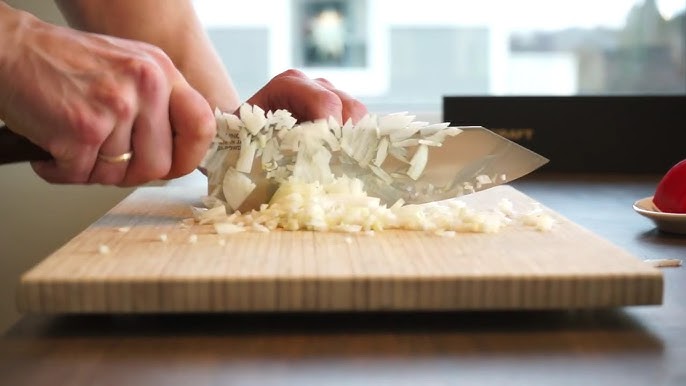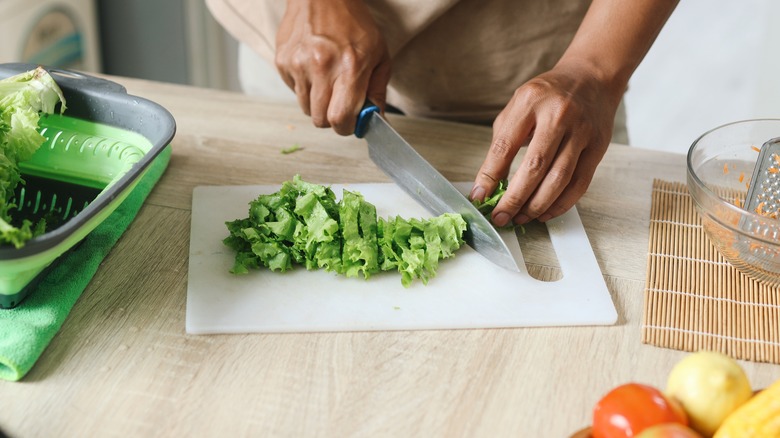When it comes to selecting the perfect knife for culinary tasks, the debate of german knife steel vs japanese is one that often emerges among kitchen professionals. These two giants in the cutlery world have distinct characteristics that cater to different preferences and needs. In this article, we will delve into their unique properties, helping you make an informed decision for your kitchen.

The Craftsmanship Behind German and Japanese Knives
Both German and Japanese knives are renowned for their exceptional craftsmanship, but they differ significantly in terms of design, steel composition, and intended use. German knives, often associated with brands like Wsthof and Zwilling, are known for their durability and heft. They are typically made from a blend of stainless steel, which includes chromium for corrosion resistance and a higher carbon content for strength.
On the other hand, Japanese knives are celebrated for their precision and sharpness. Brands like Shun and Global have popularized these knives, which are often made from harder steel alloys like VG-10 or SG2. This results in a thinner, sharper blade that excels in precision tasks, but may require more maintenance to prevent chipping.
Performance and Edge Retention
When evaluating german knife steel vs japanese in terms of performance and edge retention, it's essential to consider the tasks at hand. German knives are typically heavier and have a thicker blade, making them ideal for tasks that require force, such as cutting through bones or tough vegetables. Their edge retention is impressive, allowing them to maintain sharpness over extended use.
Japanese knives, however, are lighter and offer a finer edge, making them perfect for intricate slicing and dicing. Their sharper edge allows for clean cuts, which is essential in dishes where presentation is key. However, the harder steel can be prone to chipping, necessitating regular maintenance and careful handling.
Blade Design and Ergonomics
The design of the blade and handle also plays a crucial role in the german knife steel vs japanese debate. German knives often feature a full tang design, providing balance and durability. The handles are ergonomically designed to fit comfortably in hand, making them suitable for prolonged use without causing fatigue.
Conversely, Japanese knives often have a partial tang and are lighter, with a more delicate handle. This design is ideal for precision tasks but may require adjustment for those accustomed to heftier knives. The blade's thinner profile allows for more intricate cuts, enhancing the culinary experience.
Maintenance and Care
Maintaining your knives is crucial to ensuring their longevity and performance. German knives, with their robust construction, are generally easier to maintain. Their stainless steel composition resists rust and stains, and their edge can be easily honed with a sharpening steel.
Japanese knives, while requiring more care due to their harder steel, can maintain a superior edge with the right techniques. Regular sharpening with a whetstone and careful hand washing can keep them in top condition. For more detailed care tips, you can refer to this guide.
The Best of Both Worlds?
For those who cannot decide between german knife steel vs japanese, there are hybrid options that combine the best features of both. Some knife brands offer German-style knives with Japanese steel, providing durability and precision in one package. These hybrids offer an excellent option for chefs who require versatility in their kitchen tools.
Additionally, understanding the historical context of these knives can provide a deeper appreciation. For a brief history of German knife making, you might find this article insightful.
Conclusion
The choice between German and Japanese knives ultimately depends on personal preference and the specific culinary tasks one engages in. Both types of knives offer unique advantages that cater to different needs in the kitchen. By understanding the differences in steel composition, design, and maintenance requirements, kitchen professionals can select the right tool that enhances their culinary prowess.

FAQs
What are the main differences between German and Japanese knife steel?
German knives are typically made from softer, more durable steel, making them ideal for heavier tasks. They are known for their robustness and long-lasting edge retention. Japanese knives, made from harder steel, offer precision and sharpness, suitable for delicate slicing and intricate culinary tasks.
Do Japanese knives require more maintenance than German knives?
Yes, due to their harder steel composition, Japanese knives require more careful maintenance. They need regular sharpening with a whetstone and should be hand washed to prevent damage. German knives, being more robust, are easier to maintain.
Can I use the same sharpening tools for both German and Japanese knives?
While it's possible, it's not recommended. Japanese knives benefit from a whetstone or water stone for sharpening, which caters to their fine edge. German knives can be sharpened with a sharpening steel or a more resilient stone, given their softer steel composition.


























